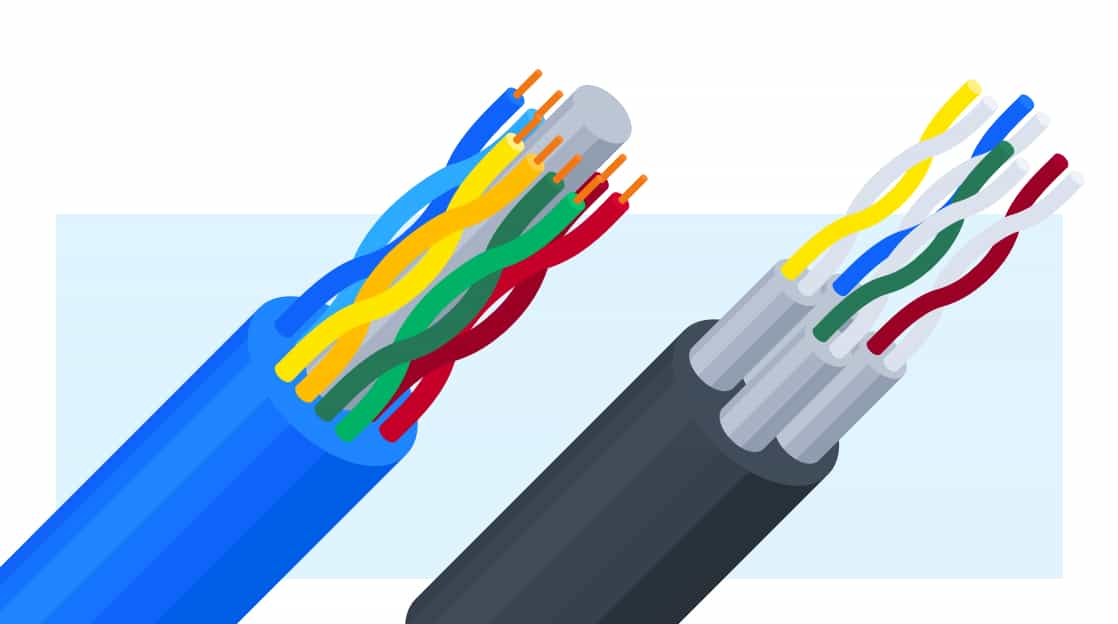CMP Fill-grade communication cables:
Fill grade communication cables, this is the highest cable safety class, which has perfect flame retardancy and emits low levels of smoke and toxins. According to the UL definition, a bundle of CMP cables must self-extinguish under fan-forced intensive combustion conditions within less than 5 m of the spread of the combustion.CMP cables use Teflon-based chemicals to stop the spread of combustion and minimize the emission of smoke and toxins. This adds significant cost compared to lower UL rated cables.CMP rated cables are used in buildings where cables are laid in ventilated return air ducts. In the event of a fire, the building will not be filled with large amounts of smoke or hazardous toxins emanating from the cable.CMP rated cables must undergo rigorous combustion testing: UL910 – “Flame Spread and Smoke Density Value Test”.

CMR (Riser-Rated Cable):
Trunking grade communications cable. This is the second highest rated cable, which is perfectly flame retardant, but is not tested for emitted smoke and toxins. CMR cables, along with all other communications cables except CMP and cables, use halide-based chemicals, such as chlorine, to stop the spread of combustion. By definition, under fan-forced combustion conditions, a bundle of CMR cables must self-extinguish within less than 5 meters of the spread of combustion.CMR cable jackets are generally made of some type of PVC, which in a combustion chamber emits chlorine, which depletes the oxygen in the air and extinguishes the flames.CMR-rated cables are widely used in trunking applications where the ventilation system is physically separate from the cabling system. This is very common in Asia and Australia.CMR rated cables must be intensively flame tested: UL1666 – “Flame Propagation Height Test for Through-to-Center Vertical Installed Cables”
CM/CMG( Communications Cable/General-purpose communication wiring cables):
Common Communication Cabling. This is commonly found in horizontal alignments in buildings, and they are usually divided into smaller bundles compared to CMR rated cables.CM/CMG rated cables use halide based chemicals when the wire is grouped together. By definition, in a small bundle, CM/CMG cables must extinguish themselves within less than 5 meters of the spread of combustion. The flame is not forced by the use of a fan.CM/CMG rated cable jackets are usually made of a certain type of PVC that emits chlorine gas in the combustion chamber.CM/CMG rated cables are commonly used in horizontal alignments in the UK, Asia, and Australia.CM/CMG rated cables must be subjected to the CSA FT-4 “Vertical Flammability Test”.CMX: Residential communications cabling.
CMX (Communications Multipurpose Cable, Limited Use):
Residential Communications Cabling. This cable is limited to residential or other small applications where the number of communication cables used is very small, and where only one cable is typically laid.CMX rated tooling cannot be used in bundled cable applications.CMX rated cables must be UL VW1 Flame Tested, a grade of copper cable that has higher fire resistance to slow down the rate of fire propagation, which is very important in special environments where fire safety is a concern. .
Overall, TST CABLES recommends that the choice of fire rating for copper cable depends on the specific application scenario and local building code requirements. When making your selection, ensure that the copper cable you choose meets or exceeds the requirements of local building codes to ensure network safety and regulatory compliance.
Also available in:
English

